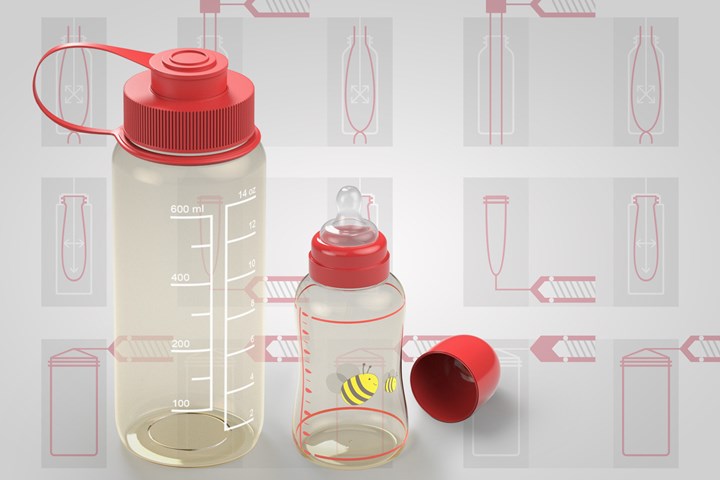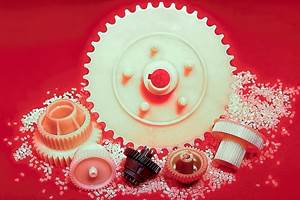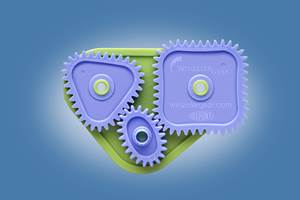PPSU for Injection Stretch & Extrusion Blow Molding and Injection Molding of Bottles
BASF’s Ultrason P 2010 and P 3010 expand the company’s PPSU portfolio and allow high-quality bottles to be made by three processes.
The two polyphenylsulphone (PPSU) grades Ultrason P 2010 and P 3010 newly introduced by BASF, Florham Park, N.J., have been designed for use in injection stretch blow molding, extrusion blow molding and injection molding to manufacture bottles for adults and babies that are safe to use, robust and chemically resistant as well as available in numerous designs, shapes and colors
All three processing methods reportedly benefit from the customized properties of the high-temperature thermoplastic: It contains no harmful substances, is approved for food contact and has outstanding strength, chemical resistance and long-term high-temperature stability up to 180 C/356 F. Bottles made from the transparent, slightly honey-colored BASF PPSU can easily withstand sterilization in a microwave or in very hot water – regardless of the method used to manufacture them.

During extrusion blow molding, the plastic melt is extruded from top to bottom through a circular die to form a tube-shaped parison. Internal pressure is then used to inflate the parison within a mold thus giving the part its shape. The medium-viscosity Ultrason P 3010 is particularly suitable for this process due to its inherent high melt strength in contrast to other PPSU materials on the market. This allows the hot, elongated parison to remain stable even near the die, ensuring uniform blow molding. For complex geometries with different wall thicknesses and designs, a programmed parison control can be used. This prevents elongation of the parison caused by the parison’s weight and results in uniform wall thicknesses over the complete length of the bottle.
When injection molding is used, the bottle body can be injection molded with or without a cap thread and base, which provides great flexibility when it comes to the bottle design or the method used to vent baby bottles. Today, the manufacturing with single and multi-cavity molds in combination with an upstream hot runner system is state of the art. The high-flow, low-viscosity Ultrason P 2010 is particularly well suited for this, as it makes thin walls possible even when there are long flow paths – without compromising the impact or chemical resistance.
The most widespread manufacturing process of all, especially for baby bottles in Asia, is injection stretch blow molding. First a parison looking like a test tube with cap thread is produced in an injection mold, then re-heated and finally stretched and inflated in a blow mold that models the bottle design as a negative. The advantages of Ultrason P 3010 can be primarily found in the rapid cycle times and exact molding of the bottle cap thread.
Both Ultrason P grades are suitable for injection molding and injection stretch blow molding because they are particularly easy to process using suitably configured hot runner systems without scrap losses. This makes it possible to produce bottles with Ultrason P that can be used for a long time and in many different application areas without compromising the quality of the mechanical and optical properties.
Said Georg Grässel from BASF’s Ultrason global business development, “The production of high-quality, safe and stylish bottles for adults and babies presents a challenge that cannot be compared to that of conventional PET, PP or co-polyester bottles. The globally widespread processing methods all have their own specific requirements of the material used – and this is where Ultrason P has proven its value to customers in many different countries. They can choose the most suitable material from our portfolio and can also benefit from our on-site technical application support and the global availability of the different grades.”
Related Content
Scaling Up Sustainable Solutions for Fiber Reinforced Composite Materials
Oak Ridge National Laboratory's Sustainable Manufacturing Technologies Group helps industrial partners tackle the sustainability challenges presented by fiber-reinforced composite materials.
Read MoreTracing the History of Polymeric Materials: Aliphatic Polyketone
Aliphatic polyketone is a material that gets little attention but is similar in chemistry to nylons, polyesters and acetals.
Read MoreTracing the History of Polymeric Materials: Acetal
The road from discovery in the lab to commercial viability can be long, and this was certainly the case for acetal polymers.
Read MoreLanxess and DSM Engineering Materials Venture Launched as ‘Envalior’
This new global engineering materials contender combines Lanxess’ high-performance materials business with DSM’s engineering materials business.
Read MoreRead Next
Making the Circular Economy a Reality
Driven by brand owner demands and new worldwide legislation, the entire supply chain is working toward the shift to circularity, with some evidence the circular economy has already begun.
Read MoreBeyond Prototypes: 8 Ways the Plastics Industry Is Using 3D Printing
Plastics processors are finding applications for 3D printing around the plant and across the supply chain. Here are 8 examples to look for at NPE2024.
Read MoreRecycling Partners Collaborate to Eliminate Production Scrap Waste at NPE2024
A collaboration between show organizer PLASTICS, recycler CPR and size reduction experts WEIMA and Conair will seek to recover and recycle 100% of the parts produced at the show.
Read More
















 (2).jpg;maxWidth=300;quality=90)








